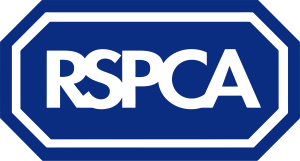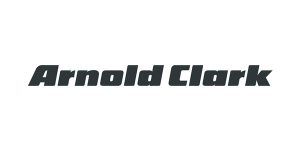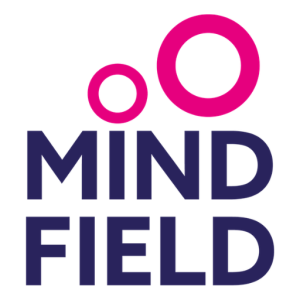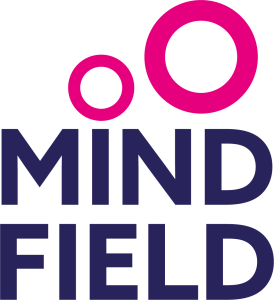Advertising research
Creative testing
Advertising has a greater chance of success when it’s built on a solid foundation of research.
We engage with target audiences at key points in the development to explore, co-create, refine and test:
- Concepts
- Creative
- Messaging
- Language and tone
- Resonance and sentiment
- Look and feel
Then we measure impact.
Collaboration:
Consider us an extension of your team. We work with you and any external organisations you partner, throughout the journey, collaborating seamlessly to help you maximise your brand equity and get the results you need.
From the outset, we include key staff from various disciplines to help foster the collaborative spirit and ensure all viewpoints and specialisms are considered.
Seven key stages of creative testing:
Stage 1: Understanding the audience
We start by understanding your priority aims and strategic objectives.
The research package we recommend is determined by your needs, what existing insights you have, your timings, and your budget.
What objectives have you set towards achieving your aims? What does success look like?
We help you set goals and KPI’s to measure success, month on month, year on year, in a continuous drive for improvement.
An initial review of your existing and secondary data on your audience, topic, and industry, helps us identify the gaps in our knowledge of your market and competitors.
Then we design the right research approach built around the principles of behavioural science. Our expertise in applied behavioural theory – including bias, heurists, and social incentivisation – enables us to ascertain people’s true actions, without relying on what they say they do.
Only once we have the real human truths can we start the creative process.
Our bespoke research uses a mix of qualitative and quantitative methods, including:
Our methodology mix:
- Community Panels
- Digital Immersions
- Depth Interviews
- Focus Groups
- Accompanied Shops
- Intercept Interviews
- Ethnography
- Usage and Attitude Surveys
- Brand and comms tracking surveys
- Observation
- Filmed Observation
- Customer Closeness
- Ideation and Co-Creation Workshops
- Creative optimisation and test surveys
- Segmentation and profiling surveys
- Kantar, Nielson and Mintel data analysis
Stage 2: Ideation and co-creation
We know the key points to bring the audience into the creative development process, including very early concept development.
Here we invite participants from the first stage of research to come together with our creative team to help bring the insight to life and develop ideas. Our clients love to get involved in this stage too, joining the ideation or co-creation sessions to work with their audience to get the creative off to the right start. This offers a great opportunity to fully understand the insight and plan how to best influence the creative.
The difference between ideation and co-creation? Ideation develops concepts, ideas and focus for the creative. Co-creation is more hands on; we all roll up our sleeves, and start to sketch out some ideas, settings, narrative, copy, and more.
This stage is best done in a workshop but can also be conducted successfully online.
Stage 3: Creative development
Starting with concepts and potential creative routes, the team will take you, your stakeholders and the audience on the creative journey with them.
Once all have agreed on the right set of creative routes, the team continue to develop the ideas until we have draft creative assets.
Stage 4: Creative refinement
Your draft creative can cover many different assets including social media designs and posts, outdoor poster designs, TV Storyboards, radio ads, and more.
Once they have been created it is time to refine them with audience input.
This can be participants who were involved in early-stage development or new participants who can offer fresh feedback.
Each set of creative assets is evaluated against the goals set at the start of the research process, as well as audience reaction, feedback, sentiment, and propensity to act upon the adverts. Consideration is also given to environment and how respondents are exposed to the adverts, to emulate as close to real-world as possible. For example:
- Scrolling through social media in their own home at breakfast time
- Watching YouTube videos at home in the evening
- Walking past digital displays in the city centre
- Listening to the radio in the car
- Reading a magazine or newspaper in a café
- Sitting in a waiting room surrounded by posters
- On public transport on their commute
All of which helps us to assess how your advertising will work across platforms based on consumption habits, and understand what tweaks are needed across tone, messaging, and look and feel, for each relevant medium.
By the end of this stage, the creative team are fully equipped to finalise the chosen routes and the assets that sit within each route.
Stage 5: Final creative testing
This is the final stage in deciding which creative route will have the greatest impact. We use a fresh audience here and increase the sample size significantly.
We want to know the likely success of the campaign for a mass market audience (everyone whom the advert seeks to influence) and your target audiences (those whom you most want to influence).
We use monadic testing, splitting the sample into even groups, with each group seeing just one route/asset. We ask each group the same set of questions, derived from your objectives for the campaign, this way we eliminate confirmation bias, and emulate as much as possible the natural way in which people consume advertising messages.
Samples are chosen to reflect your unique audience, ensuring we have full representation of relevant demographics, behaviours and attitudes, with at least 100 people shown each creative route/asset. The higher the sample, the more detailed analysis we can do.
At the end of the creative testing, you will receive a directive dashboard report that details the winning creative treatment and makes clear recommendations for activation.
Stage 6: Ad tracking
Our advertising tracking research evaluates the performance and effectiveness of your advertising campaign.
We’ll work with you to clearly outline what you want to achieve. Common objectives include brand awareness, sales increase, clicks to website or customer engagement. We choose metrics to determine which key performance indicators (KPIs) to track. These may include impressions, click-through rates (CTR), conversion rates, and return on ad spend (ROAS).
The sample we choose will be representative of your intended audience with several data collection tracking methods to gather data over the campaign’s duration. We recommend the frequency in which we collect the data so that we can clearly track impact and build in a plan for improvements.
You’ll receive a comprehensive dashboard tracking report detailing your findings; including strengths, weaknesses, and recommendations for this and future campaigns.
Our advertising research clients:
Recent brand research work:

All animals should live a pain-free life, but some are more prone to suffering than others. Fashionable brachycephalic dogs (flat-faced pugs, French and English, bulldogs etc) can be born into a short life of suffering and chronic pain, all because of how they’ve been bred. Yet it’s these extreme physical traits that make them desirable and why people show them off on social media. RSPCA want to end extreme breeding by educating and igniting the passion in dog lovers that this is not ok.
We had to help RSPCA overcome the cognitive dissonance they’d face in presenting this message to the dog-loving public. We mustn’t alienate owners of brachy breeds and turn them off the message. The focus must be on reducing the demand to stop the breeders. Our research team pre-tested the creative with the target audience to ensure it was impactful but communicated the correct message, tone and emotion.
Our headline paired with the RSPCA pledge encouraged animal lovers to sign up to help end the suffering. We added human medical breathing apparatus to the dogs to amplify their health problems and suffering. The media strategy launched the campaign with targeted social and digital display ads to coincide with Crufts 2024 when dog-lovers online searches would peak, and the brachycephalic breeds would be in the news for winning awards at the show.

As the UK’s leading independently owned car retailer, Arnold Clark are in a great position to lead the way in customer engagement and loyalty. Their Rewards scheme has seen good take-up and provided the right springboard to develop a subscription package with a broad range of perks and rewards. However, research was needed to remove all guesswork from developing a new subscription model and to co-create ideas for how they talk about the offer to their audience.
As experts in consumer research and co-creation methods, we were commissioned to help Arnold Clark. Our role was to provide insight on:
- Consumer attitude and behaviour toward reward and subscription packages
- Information sharing attitudes and trade-offs
- The role of brand in reward and subscription sign up and retention
- Appeal, motivations, barriers and builds to the proposed Arnold Clark subscription package
We conducted 8 x 1-hour workshops with 48 participants, half who had bought a car in last 12 months and half planning to buy a car in the next 12 months. We included a mix of demographics, geographies and relationships to Arnold Clark.
Our recommendations enabled Arnold Clark to move forward with the right mix of offers, product name and messaging to maximise engagement.

Not all smoke alarms are made equal.
By having one at home, you may think you’re doing enough. But doing just enough, is not enough when it comes to the safety of your family. As market leader, meeting highest standards, Aico wanted to shake the public from their slumber without scare mongering.
Our Research focus groups informed us that for Aico’s first ever B2C campaign, we must nudge consumers in the right direction. Be graphic, not dramatic.
Aico is the first line of defence.
Aico should be the first name people think of for home safety.
Let’s own first place, in the headspace, and the marketplace: Safety first. Aico first.
‘First Responder’ watch the ad
If your home catches fire, you can’t go back and change your mind about the smoke alarm you bought. We made Aico synonymous with the safety and protection of your family. Simple, elegant, intelligent, and relevant. Our UK-wide campaign amplified the timeless power of a product shot and great headline on OOH, Social, Digital, Radio and London Underground.

